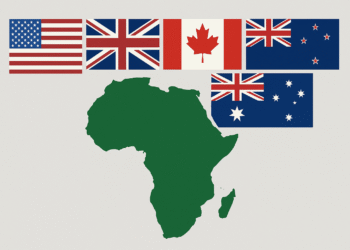In a significant update for prospective immigrants, you would recall that the UK government has introduced substantial changes to the Skilled Worker visa route.
From April 4th, as already confirmed by the Home Office, the salary threshold for obtaining a Skilled Worker visa surged by 48%, now standing at £38,700. There has been a debate about the desirability of this policy.
That notwithstanding, this increase aims to ensure that businesses pay significantly higher wages when recruiting from overseas, aligning foreign worker salaries more closely with those of UK workers.
Key Changes and Their Implications
The well-known Shortage Occupation List has been replaced with a new Immigration Salary List, and the previous 20% going-rate discount for shortage occupations has been abolished.
These measures are designed to prevent employers from paying migrant workers less than their UK counterparts in roles that are in shortage.
The new policy mandates that roles included on the list must be both skilled and in shortage, ensuring that the inclusion of any occupation does not undermine the recruitment and pay standards of British workers.
Rationale Behind the Salary Threshold Increase
The dramatic increase in the salary threshold to £38,700 is based on median UK salaries across eligible occupations.
According to the government, employers who are already offering competitive pay should meet this new threshold without difficulty.
This move aims to balance the scales between domestic and foreign workers, ensuring that overseas recruitment does not come at the expense of fair wages for UK residents.
Introduction of the Back to Work Plan
Complementing these changes, the government has also rolled out a £2.5 billion Back to Work Plan. This initiative is designed to assist 1.1 million long-term unemployed, long-term sick, or disabled individuals in overcoming barriers to employment.
The plan underscores the government’s commitment to investing in the resident workforce while still accommodating skilled immigration.
Differences Between the New and Old Lists
The new Immigration Salary List, as recommended by the Migration Advisory Committee, represents a significant reform of the previous Shortage Occupation List.
The removal of the 20% going-rate discount ensures that migrant workers in shortage occupations are not paid less than their UK counterparts.
The committee has carefully reviewed which occupations to include on the new list, focusing on roles that are both skilled and currently experiencing a shortage of suitable domestic workers.
Retaining Salary Discounts for Certain Workers
Despite these stringent new measures, the government has retained salary discounts for specific groups, such as PhD holders and new entrants to the labour market.
This retention underscores the continued importance of attracting highly skilled individuals and fresh talent to the UK, balancing the need for competitive pay with the necessity of fostering innovation and growth within the country.
Conclusion
The new Immigration Salary List and increased salary threshold represent the UK government’s latest effort to refine its immigration policy, ensuring fair wages and protecting the domestic workforce.
Prospective immigrants and employers must now navigate these new regulations, which aim to strike a balance between supporting skilled immigration and bolstering employment opportunities for UK residents.
For any enquiries please, email our editorial team at [email protected]. If you liked this story, kindly sign up for Clariform Newsletter, a handpicked selection of stories that helps you clarify things that matter and gives you clear signals about your world, delivered directly to your inbox.
Please subscribe to our YouTube channel, and join thousands of Clariform on Facebook, Twitter and Instagram.












